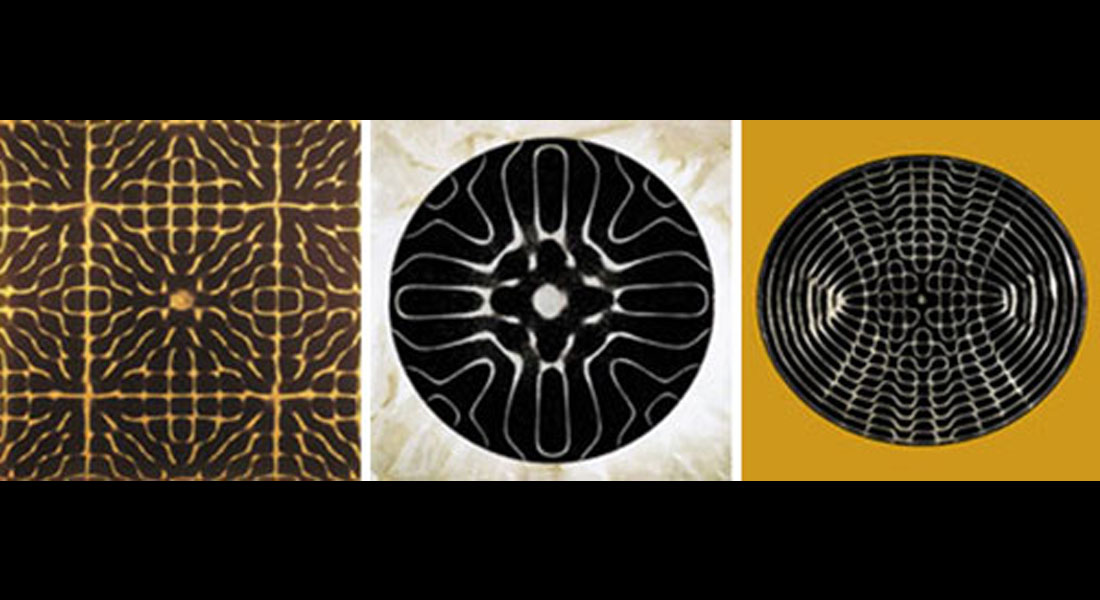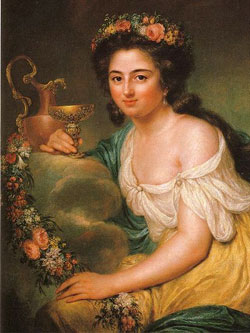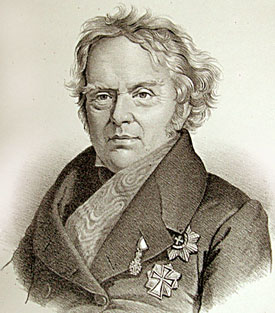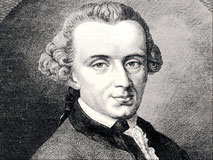Physics, philosophy and art - it all fits together
H.C. Oersted was also very interested in poetry and philosophy throughout his life. For him, science was closely connected with both philosophy and art. On his travels as a youth in 1801 Oersted saw some pictures of so called sound figures. They were advanced, geometric patterns, which the German E.F.F. Chladni could create using a violin bow as he played different tones against a glass plate with sand on it.

Oersted originally became interested in the figures when he found out that he could both generate patterns and make a fine powder completely electric by playing the bow against the plate. In that way he could see a connection between the mechanical and the electrical forces.
But later Ørsted also used the beautiful Chladni figures as an example that the sense of beauty is neither random nor individual, but is in harmony with the laws of physics.
On the same wavelength as Europe
In his European travels Oersted often got along better with the humanists than the scientists. During his visit to France he discovered that he disagreed with some of the most eminent physicists. Oersted believed that they limited physics by getting too caught up in mathematics and formulas. Moreover, he thought that they behaved very arrogantly. Oersted wanted to make physics accessible to everyone and made great efforts to find new words and concepts to describe his discoveries.

Henriette Herz (1764 – 1847)
In Germany, however, there were many who shared Oersted's views on nature and art. But these were mostly artists and intellectuals. They were inspired by Kant, as Oersted himself was. Because of their common interests, Oersted studied not only physics while he stayed in Berlin. He also attended lectures including lectures by the philosopher Fichte on moral philosophy.
He also frequented Henriette Herz' salon. Herz was a member of the intellectual elite and some of Germany's most important artists and opinion makers gathered at her house. Henriette Herz herself was interested in physics and in her salon both culture and science were discussed. Oersted had taken instruments and equipment along with him on his travels and could therefore entertain the salon with demonstrations of physics. He showed the guests how a battery functioned and made small gas explosions. In return, Oersted became good friends with many of the guests; including the Romantic author Schlegel.
It was a great inspiration for Oersted to meet such different attitudes towards research and science, as he did in France and Germany. But he held onto his own sense - just as Kant had taught him.
Cooperation between science and philosophy
In Germany there were many Romantic intellectuals who called themselves ‘natural philosophers'. They were fascinated by Kant's thoughts about a connection between science and philosophy. But Oersted was one of the only scientists who agreed with Kant. At that time the majority of physicists adhered to Newton's atomic theory. Newton believed that the fundamental units of nature are atoms not forces. Light, heat and the other forces consist of atoms, according to Newton.

Anders Sandøe Oersted (1778 – 1860) became the third primeminister in Denmark.
Therefore, many of the physicists also believed that electricity and magnetism were two different kinds of fluids, which flow between the metals. The fluids should consist of invisible and weightless particles. Moreover, it is because of this idea that the movement of electricity ‘a current'.
Today we know that even though the forces of nature do not consist of invisible fluids, much of what the Frenchmen said was correct. But it was still Oersted's attempt to develop the ‘dynamic physics' as Kant called his theory, which led him to the discovery of electromagnetism. It was also Oersted, who first put forward the idea that light consists of electromagnetic waves.
|
|

